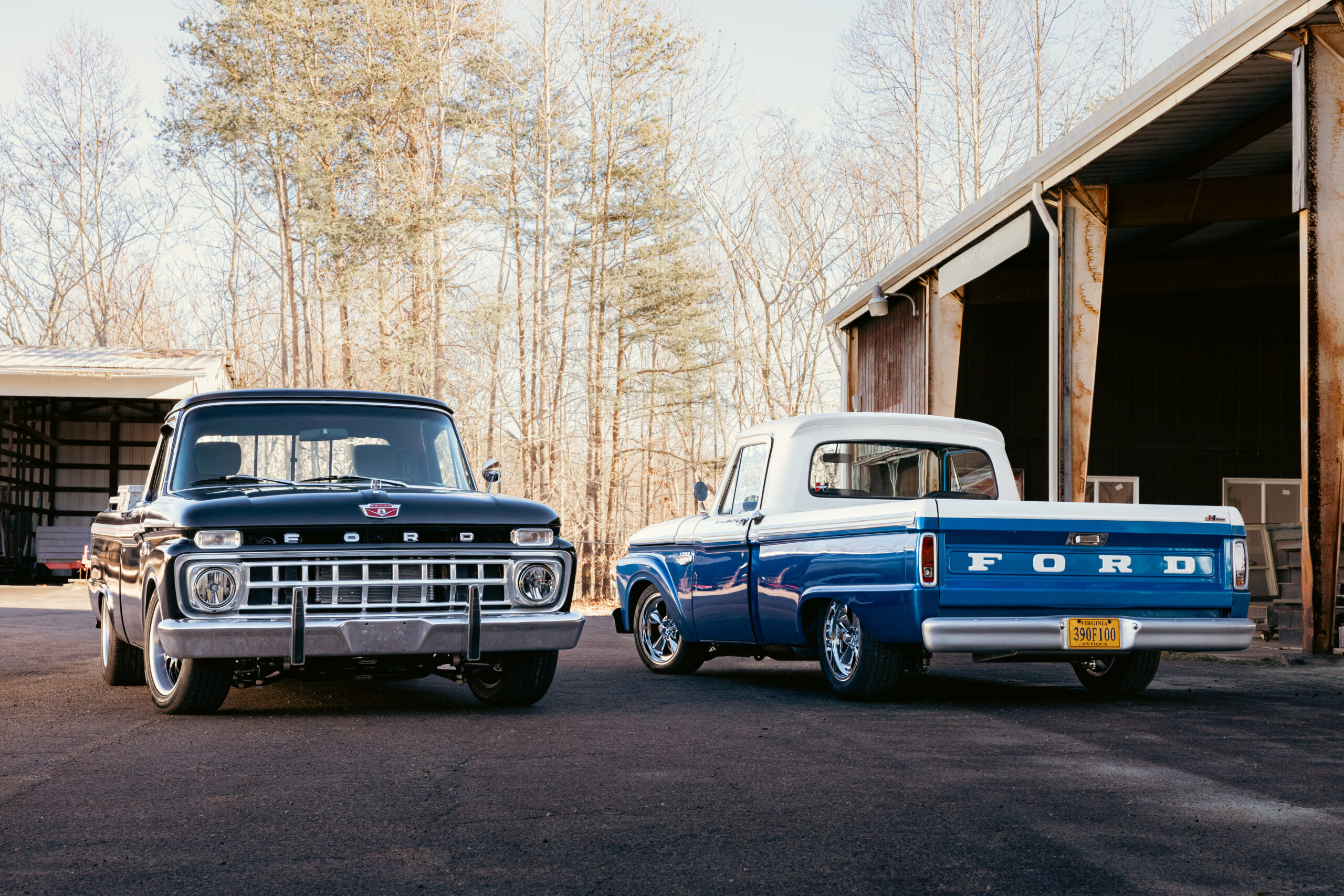
The saying 'special then, special now' encapsulates much of what drives today's collector car market. This concept revolves around the notion that vehicles which were distinctive and sought-after upon their initial release—owing perhaps to their design, speed capabilities, or limited availability—are likely to remain highly prized among collectors over time. Car enthusiasts often pursue those same aspirations from years ago as well as current ones, leading valuation trends accordingly. 427 Cobra . Jaguar E-Type . Porsche 911S .
There’s yet another segment of the market brimming with vehicles that continue to persist even though most have succumbed to obsolescence. These models gained a unique status because they were once commonplace but then largely disappeared before anyone bothered to take notice. Consider Datsun 510 . Honda CRX . 1970s American wagons.
Vintage pickup trucks do not fall into those classifications. Due to their extensive production following World War II, brands like GM, Ford, and Dodge produced so many models that few can be deemed rare. These vehicles were primarily engineered for laborious tasks rather than leisurely driving or serving as indicators of social standing. The natural reduction in older trucks over time has also had minimal impact; during the period between 1967 and 1972, GM manufactured almost four million units, with Ford producing close to three million more. Consequently, despite enduring decades of tough usage where corrosion and accidents reduced their count, numerous functional specimens remain available today.
Even so, vintage trucks—from that special period between 1967 and 1972—have been surging in the collector car market. This trend isn't recent; it has persisted for several years now, with both original condition vehicles and customized versions consistently fetching six-figure sums at auctions throughout America. To quote an astonished veteran customizer I know who recently attended an Arizona auction, "It's nothing but a load of damn trucks."
Therefore, how exactly did we arrive at this point? What factors led to the evolution of classic trucks into their current position, and what explains their enduring appeal compared to other trends in the market?
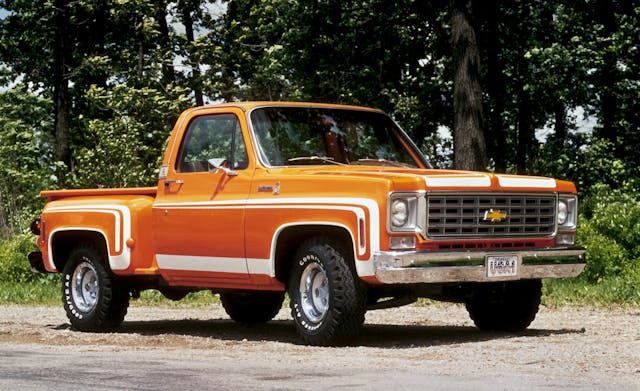
High Impact
To grasp the dynamics of the recent truck market, one must first comprehend the dramatic surge experienced by the muscle car market during the 1980s, 1990s, and 2000s.
During those times, individuals who initially encountered muscle cars back in the 1960s and '70s found themselves in their prime earning periods. Throughout the 2000s, the value of muscle cars climbed consistently, culminating in the first multimillion-dollar sale of such a vehicle at an auction (a Hemi ’Cuda convertible ) causing a stir in 2002. LS6 Chevelles , Boss 429 Mustangs , Ram Air GTOs , and A12 Road Runners They were always regarded as special, if not precious, but the market took significant notice of them during this period. The finest specimens shattered records at auctions for years—until the housing collapse hit the collector car market in 2009.
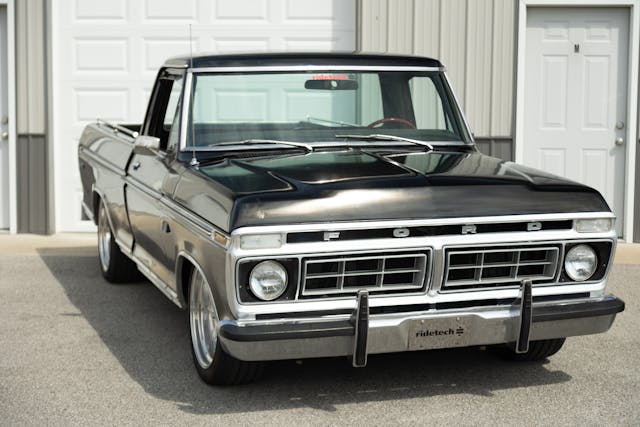
In 1995, Craig Jackson assumed control of Barrett-Jackson and noticed the emerging muscle car trend. Recognizing this shift, he adjusted the company’s focus to capitalize on changing market dynamics by incorporating an increased number of muscle cars into their inventory. As Tom Barrett once mentioned about the early days of their auctions, "There were brand-new cars parked outside." This statement reflects how the scene has evolved significantly since then. Linkage Magazine states, "Once I began gathering muscle cars...my family and I had a Figoni et Falaschi Delahaye. After selling that vehicle, I used my share of the earnings to purchase both a ZL-1 and a Hemi 'Cuda convertible. My father remarked that I was acting crazy."
My brother and I—he was alive until 1995 when he passed away—we used to discuss this topic frequently. He also had an affinity for muscles. Therefore, he shouldered the responsibility of informing our father and Barrett about needing to incorporate more of these items. After my brother’s death, during the initial year, I distributed questionnaires to all my clients. We then refined the auction process by taking into account everyone's feedback.
Muscle cars quickly turned into a mainstay at Barrett-Jackson auctions, which in turn became a regular feature on Speedvision (later known as The Speed Channel). This helped expand both the reach of these sales events and increase interest in American muscle cars among a broader viewership.
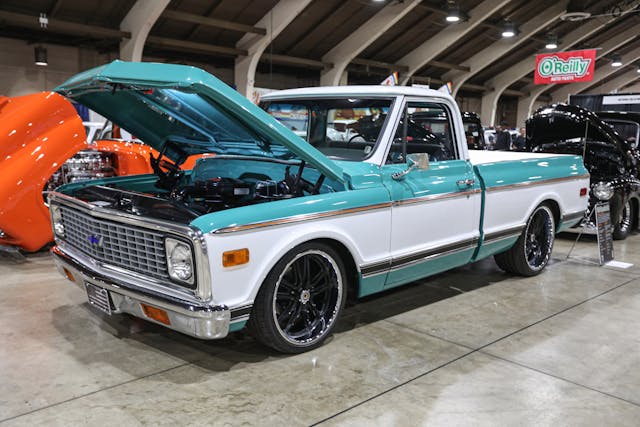
The popularity of muscle cars during that period extended into the realm of trucks as well, affecting both vintage models and newly introduced ones. Soon enough, aficionados recognized that these pickups contained many of the same performance elements found in muscle cars but at more affordable prices. These trucks offered V-8 engines, a solid rear axle, and straightforward suspension systems.
"I hold the class of '83 responsible," he states. C10 Talk Ronnie Wetch, who hosts and owns the podcast, has conducted interviews with numerous truck purchasers, constructors, and component suppliers over the last ten years. So far, he has released 310 episodes.
It comes down to generations," explains Wetch. "They lusted after the Barracudas, the Plymouths, the Camaros, the Chevelles—the muscle cars—and perhaps even the Mustang. But these folks realize they can't afford those. Instead, they're stuck working at places like Taco John’s or Taco Bell, or possibly at their neighborhood grocery stores. So essentially, all they can really manage is an older pickup truck.
And thus, those individuals acquired those trucks, constructed them, and enhanced their appeal, which sparked interest among the younger generation as well. Consequently, the graduating class of '83 joined in. Over time, this trend continued with each new cohort; hence, the classes of '89, '92, and '95 also became part of it. These successive groups of youngsters followed suit. Chevrolet C10 Alone, from '60 right through to '87. Then when we talk about GM’s C/K series, you have the OBS—Old Body Style, which covers 1988-1998—and later on, the NBS, New Body Style, spanning 1999-2007, also make an appearance."
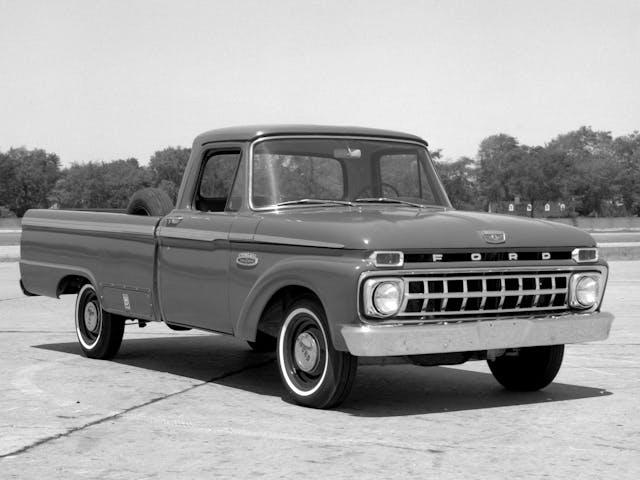
The Nostalgia Factor
The cost of muscle cars plays a role in this narrative, yet it isn’t the sole element at play. If you inquire with any truck owner regarding their choice, they will recount tales centered around their families. Looking back often imparts a nostalgic glow upon past events. The eras appear more straightforward when remembered through the lens of sitting beside someone in the cab of a pickup, whether running chores, fetching components, transporting gear, or picking up treats. As time marches forward, these moments become increasingly distant; however, the trucks remain.
In the early 2000s, Josh Molenkamp embarked on a 1972 Chevelle project during a period when these vehicles were gaining both popularity and higher price tags in the market. However, he deviated from the typical path and decided to part ways with the Chevelle. Instead, he undertook rebuilding a '70 Chevrolet C10 that once belonged to his dad.
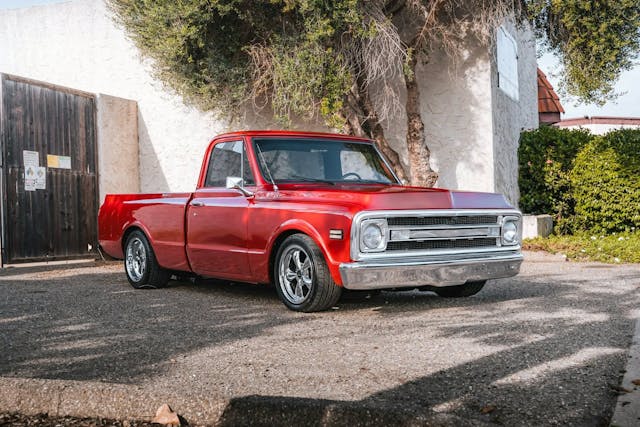
I decided mainly due to my past experiences with the truck," explains Molenkamp. "It was actually the first vehicle I ever drove. When I was 12 years old, I began taking it into the woods for hunting trips and such activities. I absolutely adored it. There were countless memorable moments associated with this truck. I believe many individuals can relate to owning and spending time around an older model truck. Everyone seems to know someone who has owned one... So, it's all about nostalgia, which resonates strongly with people nowadays.
Molenkamp still owns the '70, which is now lowered and frequently seen performing burnouts on Instagram (@jmolenkamp) or driving to events with his child. He recently acquired a lowered first-generation Blazer as well. "The Blazer is a peculiar vehicle to comprehend," he notes. "It resembles an A-body Chevelle or GTO but functions like a convertible pickup. Although it's compact compared to regular cars, both children can easily join him without issues."
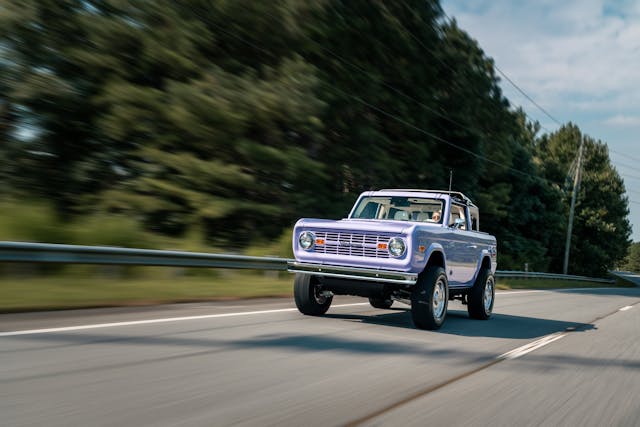
Six-Figure Enthusiasm
From an elevated perspective, everything points towards explaining why trucks have gained popularity within the collectible vehicle realm. However, in recent years, we've observed unexpected yet consistent expansion in this sector across various auctions and gatherings. This surge can largely be attributed to similar demographic changes that fueled the ascent of the muscle car market.
A fresh batch of purchasers, more than two decades past their younger days and currently in their peak spending phase, are reflecting upon the past. Though they still have an affinity for muscle cars, many of these individuals actually owned vintage trucks during their formative years. Moreover, they did not keep those old vehicles entirely original even at that time.
Wetch notes, "A significant indicator of this trend occurred several years ago when I observed something at an auction. There was a '71 Plymouth ‘Cuda which didn’t have a Hemi engine or even a 440. It sold for around $58K. In contrast, an '84 C10 with modifications such as an LS swap, lowering kit, new wheels, and tires fetched approximately $10,000 more. At that moment, I realized we had experienced considerable change."
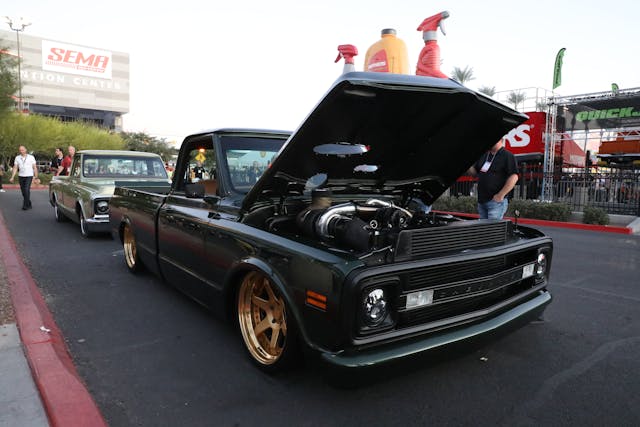
Starting from the latter part of the 2010s, this trend has persisted. Whether you choose Barrett-Jackson events in locations like Scottsdale or Palm Beach, or opt for auctions at Mecum such as those held in Kissimmee or Indianapolis, you'll encounter multimillion-dollar deals on customized pickup trucks, encompassing models from both GM and Ford lineups. These vehicles often come equipped with advanced features including coilovers or air suspensions, contemporary fuel-injection systems paired with powerful V-8 engines, along with large-diameter wheels and high-performance braking components. Additionally, various new gatherings dedicated to these modified pickups have emerged and expanded across different regions of the nation; one notable example being Dino’s Git Down in Arizona, which saw an impressive assembly of over ten thousand GM pick-up trucks during their two-day celebration last November.
"Just as we saw with baby boomers gathering classic American muscle cars, Generation X and millennial individuals are drawn to the SUVs and pickup trucks they grew up with," according to Craig Jackson.
In 2014, the multi award-winning customized 1957 Chevrolet pickup known as 'Quicksilver' claimed first place at the Barrett-Jackson Cup competition. This victory played a role in reshaping the idea of what constitutes a collectible vehicle within both the hobby and professional sectors. The truck later appeared at our Scottsdale auction in 2016 where it was eventually sold. $214,500 —a sum unprecedented for a customized pickup only a few years earlier.
“Over the last several years, trucks and SUVs—like the 1970s Ford Broncos, Toyota Land Cruisers, and Chevy Blazers, as well as third-generation Toyota SR5 trucks—have become as much of a status symbol as they are utilitarian. Much like American muscle cars, resto-mod trucks and SUVs are sophisticated, reliable, and even safer, with modern amenities, comfort, and technology.”
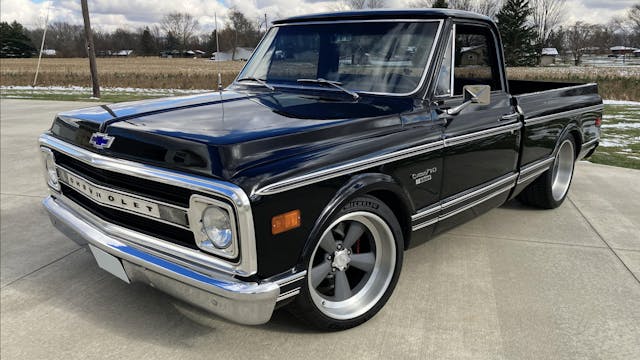
Mecum’s 2023 Kissimmee auction established a new benchmark for C10s with a 1969 C10 built by The Roadster Shop selling for an impressive price. $264,000 It included an entirely new bespoke frame, a 755-horsepower Chevrolet Corvette ZR1 LT5 engine, a 10-speed automated transmission, Forgeline rims, among other features.
Barrett-Jackson auctioned off a first-generation Chevrolet Blazer built by Hogan in Scottsdale for $440K. 2022 , 2023 , and 2024 , with another earning $337,700 in January. 2025 At this year's auction, Barrett-Jackson offered 45 Chevrolet and GMC trucks manufactured between 1967 and 1972. Among these, two vehicles fetched prices over $200K each, ten reached at least $100K, and twenty-six were sold for $60K or higher. The '77 Ford "Hoonitruck" owned by Ken Block also went under the hammer. $990K , along with 14 other F-Series trucks that each sold for more than $100K. These vehicles had all undergone modifications as well.
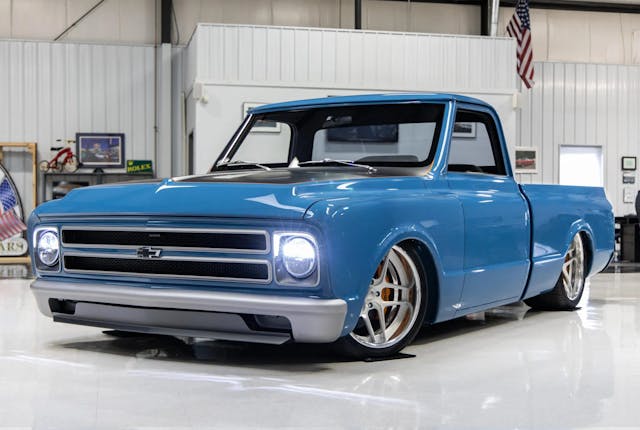
Label it as live auction overconfidence if you wish. Perhaps it's bidder excitement or the influence of television. However, this phenomenon isn’t confined solely to live auctions. For instance, in June 2023, Bring a Trailer presented a supercharged LS3-equipped '68 C10 pickup that received both the Chevrolet Design Award and the Goodguys Gold Award at SEMA back in 2018. This vehicle ultimately sold for $250,000 Perhaps it's an anomaly—the subsequent highest BaT sale for this model reaches only $130K. However, this particular truck attracted 11 active bidders. after The bids peaked above $100K, indicating quite a bit of interest.
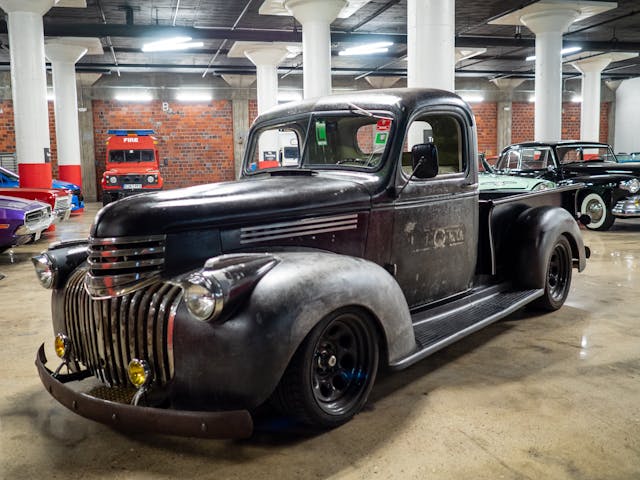
Build Your Own
The surge in value can be attributed to the aftermarket sector, and due to the large number of trucks produced, hardly anything remains sacrosanct regarding whether they should be restored or modified.
Strolling around the floor of the SEMA show in Las Vegas feels much like attending a truck exhibition nowadays, due to producers who treat these vehicles with the same enthusiasm they once reserved for hot rods and muscle cars.
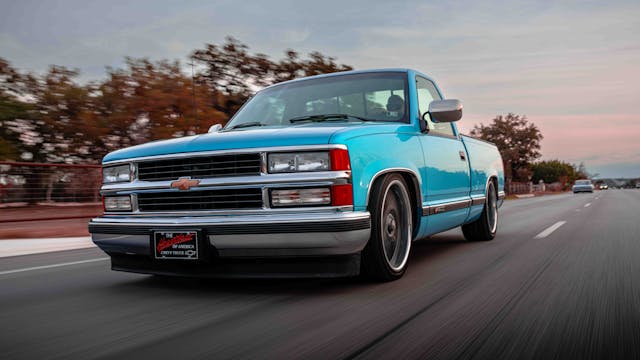
In recent years—from about the past five to seven—there’s been an incredible surge in interest for classic trucks," explains Blane Burnett, who currently serves as the brand marketing manager at Ridetech after previously working as a senior events manager at Holley Performance Products. "This renewed enthusiasm can be attributed to factors like the timeless appeal following the three-decade mark along with nostalgia. Additionally, shifts in perceptions around pickup trucks during high-profile automotive gatherings such as LS Fest, Moparty, Ford Festival, and the Pro Touring Truck Shootout have also contributed significantly. These changes have led to more impressive numbers, higher standards, and enhanced capabilities within this niche.
I felt fortunate to organize several of the industry's most influential lifestyle enthusiast events at Holley, where over the years, attendees started requesting more focus on trucks. In 2018, the Truck Grand Champion class made its debut at LS Fest and quickly became a standard feature at various Holley events thereafter, providing truck enthusiasts their very own platform to compete. Considering the escalating auction values, particularly those seen at venues such as Barrett Jackson, it's evident that classic trucks will remain highly sought after for quite some time.
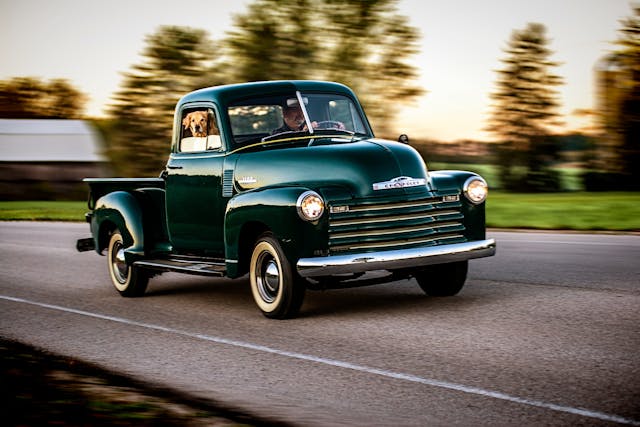
Community and Continuity
These elements come together in a market niche that is both extravagant and widely appealing. This isn’t just about being exclusive "then" and "now," nor is it focused on limited-edition models. Instead, it appears to revolve around recreating and reinventing an experience, blending nostalgic accessibility with contemporary performance and design. For enthusiasts attracted to classic trucks, this combination has proven quite potent. Additionally, the working-class heritage behind these vehicles seems to break down certain conventional barriers. Regardless of how refined they may become, even the most luxurious trucks maintain their practical essence as workhorses.
You can attend a truck show where you'll see someone driving a multimillion-dollar vehicle right alongside another person who has an older model worth only tens of thousands," explains Wetch. "The owner of the expensive rig may approach and say something like, 'I appreciate your work... This is awesome.' Meanwhile, that younger individual might admire their luxurious ride saying, 'Look at how amazing this truck is!' It unites everyone under one roof; however, it's the interactions among enthusiasts that make these events so compelling. We've always aimed for our community to stand out based on such connections.
That community has shown readiness to invest, and auction houses which have adapted to cater to these audiences are attracting substantial interest driven by this demand. They now feature not only JDM vehicles but also upcoming classic models and sports cars from the 1980s. As expected, time continues to move forward.
I share with my crowd, 'don't just reflect on being part of a movement; recognize that you're actively involved in one and enjoy it even more,'” explains Wetch. "My motto is ‘the trucks are impressive, yet the people are even better.’ This sentiment stands out strongly in our current times.
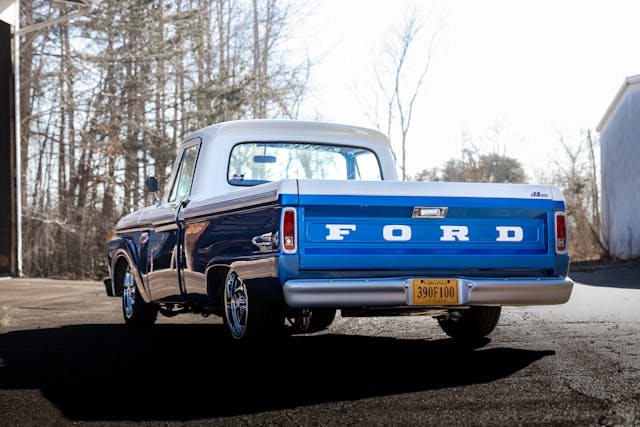
The post Why the Antique Pickup Market Has Grown So Substantially appeared first on Hagerty Media .
Interested in buying a car? Discover your perfect match on the MSN Autos Marketplace.